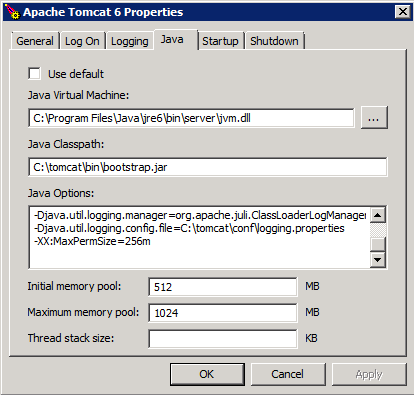
Profiling memory use of a Java application If they don’t, you will need to investigate how the JVM is using memory before making any another adjustments. These options might reduce the overall memory footprint of your JVM process. On Java 9 and newer, the option is no longer experimental: -XX:+UseContainerSupport On Java 8, the use of cgroup memory limits is an experimental feature, and can be enabled by adding the following options to your JVM process (either in your Procfile or with a config variable): -XX:+UnlockExperimentalVMOptions -XX:+UseCGroupMemoryLimitForHeap You can work around this by configuring the JVM to use cgroup memory limits instead. However, when running inside of a container (such as a Heroku dyno or a Docker container), the values reported by the OS may be incorrect. The JVM attempts to set default allocation values for its various memory categories based on what the operating system reports is available. This type of memory can be affected by Tuning glibc Memory Behavior. Visibility tools that run on the JVM won’t show this overhead, so while they can give an idea of how an application uses memory, they can’t show the total memory use of the JVM process. This holds the C libraries for the JVM and some C memory allocation overhead that it takes to run the rest of the memory pools above. The size of Metaspace is controlled by setting -XX:MetaspaceSize.Īdditional JVM overhead - In addition to the above, some memory is consumed by the JVM itself. Metaspace - Metaspace stores the class definitions of your objects.

The -Xss JVM option controls how much memory gets allocated for each thread’s stack. The stack is cleaned up as stack frames move out of context, so no GC is performed here. The stack stores primitive local variables and object references, along with the call stack (method invocations) itself. Java Stack - Each thread has its own call stack. Heap size is controlled by the -Xms and -Xmx JVM flags. When discussing Java memory and optimization, we most often discuss the heap because we have the most control over it, and it is where garbage collection (and GC optimizations) take place. Instance variables are stored in objects. Java Heap - The heap is where your class instantiations (or objects) are stored. Outside of the heap, memory is also consumed by Metaspace and the stack.

The primary, but not singular, use of memory is in the heap. The JVM uses memory in a number of different ways. Tuning the memory use of your application requires understanding both how Java uses memory and how you can gain visibility into your application’s memory use. Profiling memory use of a Java application.


 0 kommentar(er)
0 kommentar(er)
